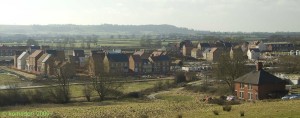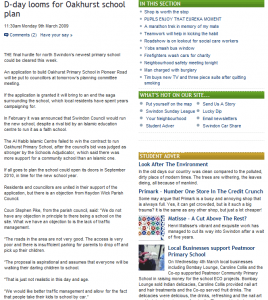In a contest, it’s important for the participants to know and follow the rules. Those that don’t know the rules tend to lose or worse, get disqualified. This basic requirement applies not just to sports, but to any contest: school exams, elections, mortgage applications, the list is endless. Somewhere in that list are planning enquiries.
As I’ve noted before, the Save Coate campaigners have admitted to being amateurs when it comes to planning enquiries. In their surprise at how the Coate Enquiry has been run, that amateurishness is apparent.
All of those signatures that took time and effort to get together were just counted as one complaint.
If they’ve read the guidance for participating in planning appeals, they should’ve known before they started that would be the case. It doesn’t take much effort to find a couple of examples on the Planning Inspectorate’s website that show how petitions have been treated in previous enquiries. Why do they think it is that many of the big environmental activist groups don’t bother with petitions but run mass letter writing campaigns instead? It takes less than a second and zero thought to sign a petition. They may be good for publicity; unless backed-up by submissions from others making a similar point, they’re almost worthless for winning a case.
I think Swindon Council really passed up a number of opportunities to challenge the developers, so it was left to us to do it.
Or perhaps Swindon Borough Council’s counsel was sticking to the rules, rather than raising issues that the law does not allow the inspector to consider.
I just hope that the planning inspector appreciates the views of the people of Swindon and will take those on board.
That’s very unlikely, as he’s not heard the views of the majority of the people of Swindon. All he’s heard are the views of the council, the campaigners and the developers.
I don’t wish there to be development in the area near to Coate Water, but neither do I wish to have a group of unelected environmentalists claiming to represent the views of Swindon.
 You might think that those responsible for one of the country’s foremost libraries would take some pride in their use of the English language. Alas not. Why use just one word when three could be given some exercise? Oxford University’s Bodleian Library, in their news report and other pages, choose to describe their proposed warehouse in South Marston as a ‘book storage facility’.
You might think that those responsible for one of the country’s foremost libraries would take some pride in their use of the English language. Alas not. Why use just one word when three could be given some exercise? Oxford University’s Bodleian Library, in their news report and other pages, choose to describe their proposed warehouse in South Marston as a ‘book storage facility’.
